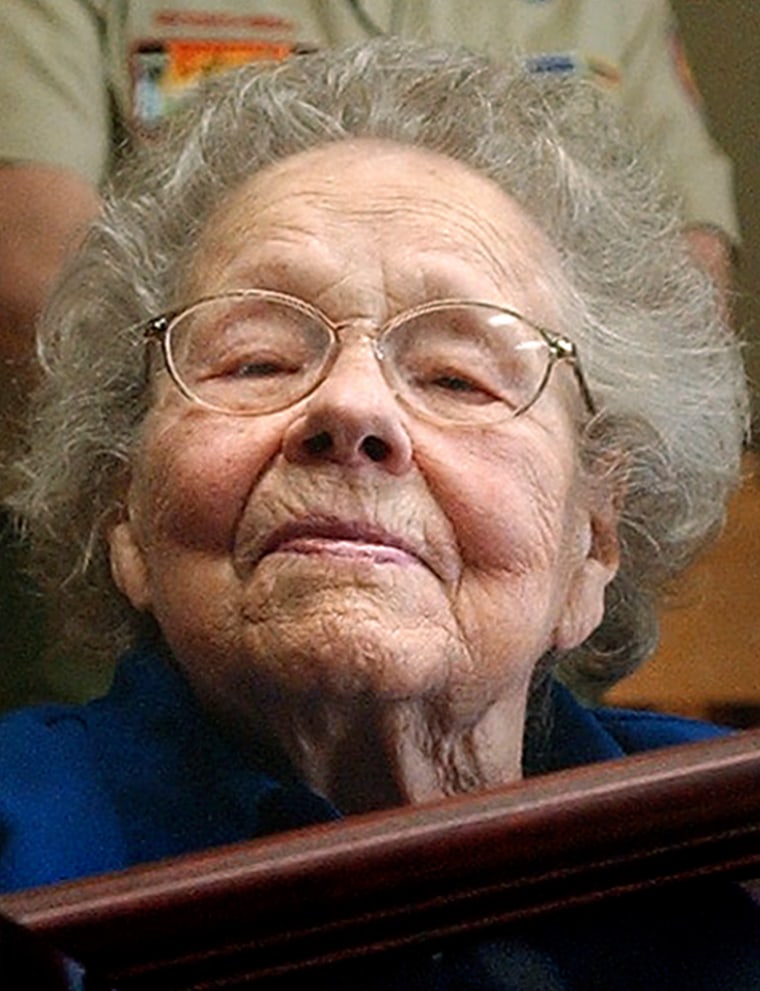Elma Gardner "Pem" Farnsworth, who helped her husband, Philo T. Farnsworth, develop the television and was among the first people whose images were transmitted on TV, has died at age 98.
Her death Thursday was confirmed by Mary Rippley, assistant director of nursing at Avalon Care Center in Bountiful, where Farnsworth lived.
Farnsworth, who married the young inventor in 1926, worked by her husband's side in his laboratories and fought for decades to assure his place in history after his 1971 death.
Other inventors had demonstrated various developments in the 1920s, including mechanical transmission of images, but it was Farnsworth's work that led to the electronic TV we know today.
His first TV transmission was on Sept. 7, 1927, in his San Francisco lab, when the 21-year-old inventor sent the image of a horizontal line to a receiver in the next room.
He said inspiration for his invention had come seven years earlier, while plowing a field on his family's Idaho farm. He realized an image could be scanned onto a picture tube the same way: row by row.
His widow recalled that morning in the lab "like it was yesterday," she told the San Francisco Chronicle in 2002. "It was a very small screen, about the size of a postage stamp, an inch and a half square. At first, we were stunned. It was too good to be true. Then Phil said, 'There you have it — electric television.'"
According to the book "Philo T. Farnsworth: The Father of Television" by Donald G. Godfrey, the first human images transmitted by Farnsworth were of his wife and her brother, Cliff Gardner. A 3 1/2-inch-square image of his wife with her eyes closed was transmitted on Oct. 19, 1929, Gardner wrote. The book lists her as "first woman on TV."
But credit for the invention nearly escaped Farnsworth after RCA claimed the innovation was the work of its chief television engineer, Vladimir Zworykin. In 1935, the courts ruled on Farnsworth's patent, naming him TV's undisputed father. The decision was upheld on appeal, though Farnsworth continued to get little recognition.
Philo Farnsworth gave his wife equal credit in his invention, saying, "my wife and I started this TV," according to Godfrey.
He eventually was featured on a U.S. postage stamp, and a historical marker was placed on the San Francisco building where the first Farnsworth television image was projected. A statue of her husband now stands in the U.S. Capitol bearing the inscription: "Philo Taylor Farnsworth: Inventor of Television."
Elma Farnsworth was received with applause when she stood up at the Academy of Television Arts & Science's Emmy Awards tribute to her husband in Los Angeles in 2002.
The battle between Farnsworth and RCA boss David Sarnoff was told in several books, including his widow's 1990 autobiography, "Distant Vision."
Evan I. Schwartz, who wrote "The Last Lone Inventor: A Tale of Genius, Deceit and the Birth of Television," said in 2002 that he, like many people, were puzzled when he began researching the story.
"I had heard the name. You can't forget the name," Schwartz said. "But then I had these questions: Who WAS this guy? How could you invent the defining technology of the century and remain virtually anonymous? That's quite a trick."
Elma Farnsworth was born near Vernal on Feb. 25, 1908. Her family moved to Provo, where she met the man she would marry and call "Phil." The couple had four sons. The Farnsworths lived in several parts of the country, including in Fort Wayne, Ind., before returning to Utah.
In a 1999 interview with The Journal Gazette of Fort Wayne, she recalled that she was more interested in fighting for recognition of her husband than he was.
"He'd say, 'We have too much to do for the future to worry about the past. History will take care of that,'" she said.
"He told me early on, 'We're going to be right on the leading edge, and it's going to be very exciting.'"
Survivors include sons Russell of New York and Kent of Fort Wayne.
